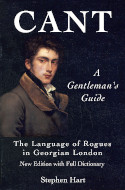THE GRAVE MAURICE TAVERN
There are two taverns with this name,—in St. Leonard's-road, and Whitechapel-road. The history of the sign is curious. Many years ago the latter house had a written sign, "The Grave Morris," but this has been amended.
But the original was the famous Prince of Orange, Grave Maurice, of whom we read in Howel's Familiar Letters. In Junius's Etymologicon, Grave is explained to be Comes, or Count, as Palsgrave is Palatine Count; of which we have an instance in Palsgrave Count, or Elector Palatine, who married Princess Elizabeth, daughter of James I. Their issue were the Palsgrave Charles Louis, the Grave Count or Prince Palatine Rupert, and the Grave Count or Prince Maurice, who alike distinguished themselves in the Civil Wars.
The two princes, Rupert and Maurice, for their loyalty and courage, were after the Restoration, very popular; which induced the author of the Tavern Anecdotes to conjecture: "As we have an idea that the Mount at Whitechapel was raised to overawe the City, Maurice, before he proceeded to the west, might have the command of the work on the east side of the metropolis, and a temporary residence on the spot where his sign was so lately exhibited." At the close of the troubles of the reign, the two princes retired. In 1652, they were endeavouring to annoy the enemies of Charles II. in the West Indies; when the Grave Maurice lost his life in a hurricane.
The sign of the Grave Maurice remained against the house in the Whitechapel-road till the year 1806, when it was taken down to be repainted. It represented a soldier in a hat and feather, and blue uniform. The tradition of the neighbourhood is, that it is the portrait of a prince of Hesse, who was a great warrior, but of so inflexible a countenance, that he was never seen to smile in his life; and that he was, therefore, most properly termed Grave.
John Timbs
Club Life of London Vol. II
London, 1866

